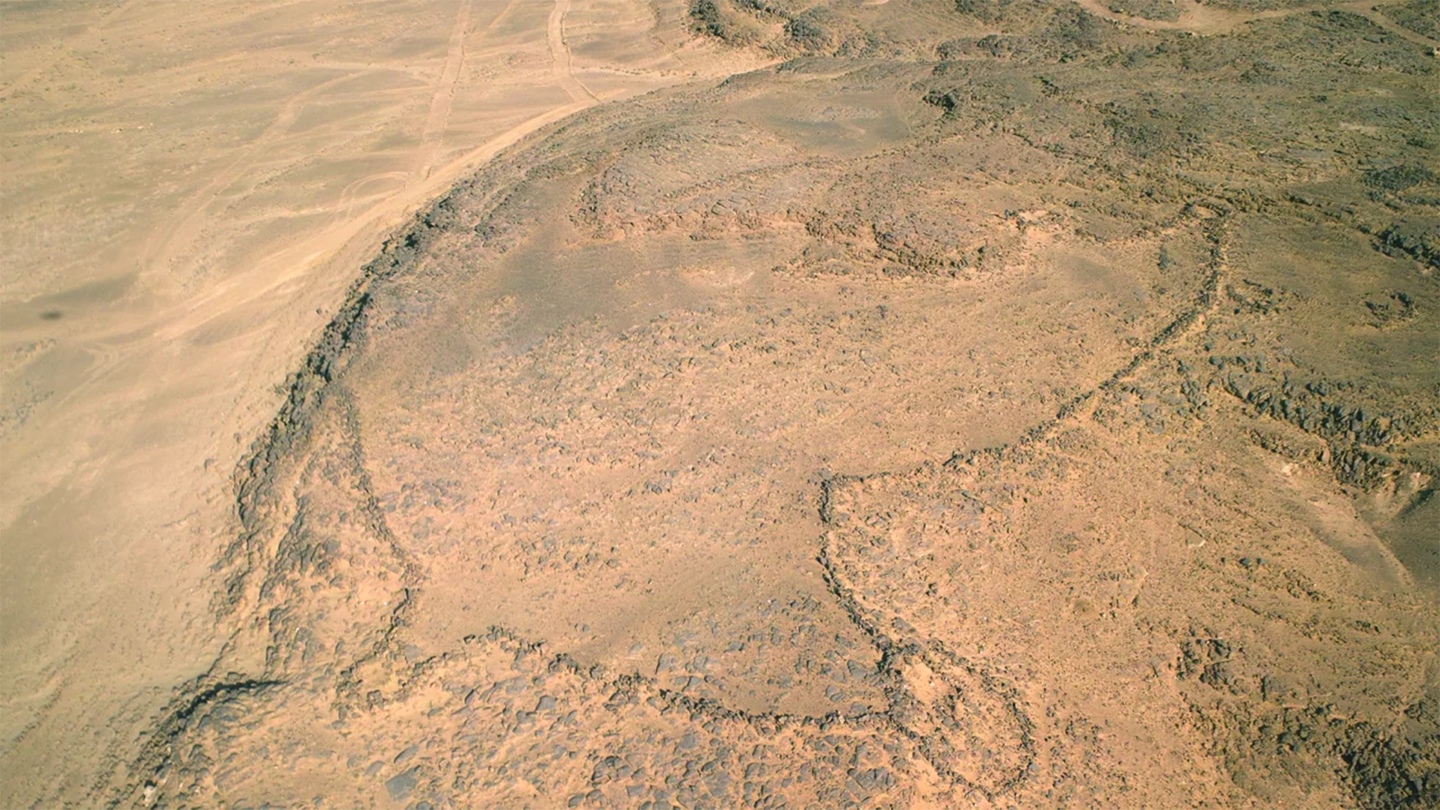Blueprints engraved in stone from Saudi Arabia and Jordan could be the world’s oldest
The nearly 8,000-year-old plans helped ancient people build massive places to herd and slaughter animals.

An international team of archaeologists digging in Saudi Arabia and Jordan reportedly found the world’s oldest architectural plans. The findings were published in a study May 17 in the journal PLOS ONE and includes precise engravings that date back between 7,000 and 8,000 years ago.
[Related: Details of life in Bronze Age Mycenae could lie at the bottom of a well.]
These ancient blueprints depict large structures used to trap and funnel animals for slaughter into enclosures called kites. First spotted by aviators in the 1920s, the contraptions are called “kites” because of the shape they form. The converging walls range from hundreds of feet up to 3.1 miles long and drive the animals towards a corral surrounded by pits up to 13.1 feet deep.
According to the authors, plans like these for kites represent a milestone in human development because intelligent behavior is needed to transpose the plans for such a large space onto a small two dimensional surface. A kite would have also helped people hunt a larger group of animals in a shorter period of time.
“Although human constructions have modified natural spaces for millennia, few plans or maps predate the period of the literate civilizations of Mesopotamia and Ancient Egypt,” the authors wrote in a statement. “The ability to transpose large space onto a small, two dimensional surface represents a milestone in intelligent behavior. Such structures are visible as a whole only from the air, yet this calls for the representation of space in a way not seen at this time.”

In this new study, the team reports two new engravings first unearthed in 2015 that represent the ruins of kites in present-day Jordan and Saudi Arabia. The Jibal al-Khasabiyeh area in Jordan has eight kite areas. The stone found with a representation of how to build them that was carved with stone tools measures two feet long and one foot wide and is about 7,000 years old.
In Saudi Arabia, Zebel az-Zilliyat has two pairs of visible kites that are about two miles apart. A massive to-scale engraving of the plans was excavated nearby. The 10 feet long by seven feet wide blueprint dated to about 8,000 years ago. In this engraving, it was reportedly pecked instead of carved into the stone, possibly with hand picks. It was created at a scale of roughly 1:175, so actual kites were 175 times larger than the engraving itself.
The study also found that the proportions, layout, and shape of the engravings were consistent with the actual remains of the ancient kites. They are also in keeping with the four cardinal directions (north, south, east, and west).
[Related: Cave drawings from 20,000 years ago may feature an early form of writing.]
Over 6,000 kite structures have been found across central Asia and the Middle East, with the majority in present-day Saudi Arabia, eastern Jordan, and southern Syria. There are other ancient engravings in Europe that are believed to portray maps, but scientists have yet to discover depictions of hunting kites on the continent.
Little is known about the people who made the kites thousands of years ago and a project like this likely would have been a large group undertaking, according to the authors.
